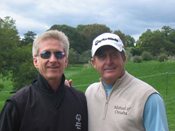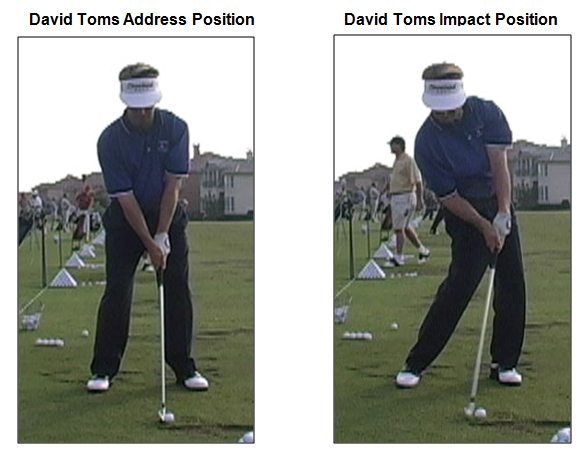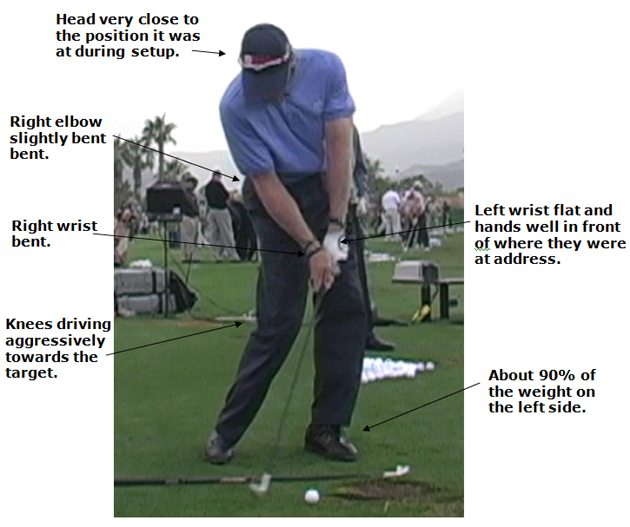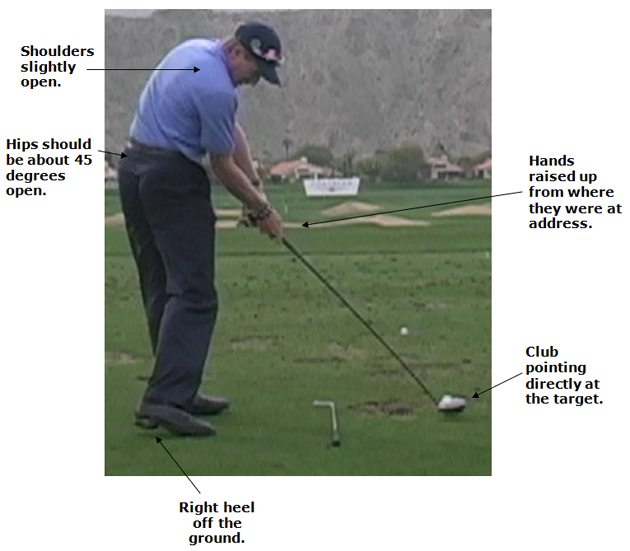Consistent Golf Gazette – 29th January 2012
Did you know that 7 out of 10 golfers are overweight?
I didn’t realize it was quite that bad.
That’s not good!
But just last week I came across a guy who is helping golfers to lose weight and become healthier. His name is Larry Jacobs and he’s helped some famous people in the golf world to shed weight -without dieting, counting calories, or starving. For example, he’s helped the following golfers to lose weight….
[black_arrow_list width=”100%”]- Fred Funk
- Allen Doyle
- Don Trahan
- Dottie Pepper
- Todd Graves
- Roger Maltbie
Apparently Larry is the “go to” guy on the PGA Tour for golfers to shed weight. And because this is such a big problem (pun intended ) I have arranged for you to get one of Larry’s Tele-Seminars for FREE!
In this free tele-seminar you’re going to discover how to lose maximum weight in minimum time. To find out more and to signup for this free tele-seminar simply go here.
OK, let’s get into this week’s instruction….
[divider_bar]Insert Your Text Here[/divider_bar] [headline_arial_large_centered color=”#990000″]PGA Tour Player’s Impact Position Analysis[/headline_arial_large_centered]The position you arrive at impact in is the result of all the positions that went before. You can’t contrive a great impact position.
Having said that, there are great golfers that have far less than perfect swing mechanics that arrive at a great impact position.
How does that happen?
Compensations and manipulations.
They have hit so many balls, learnt from trial and error and have great hand-eye coordination, that they can consistently do things with the golf club during the swing that causes them to arrive at the ball in a great impact position, i.e. Lee Trevino, Ray Floyd etc.
And if you look at all great ball strikers at the moment of impact they are all in a very similar position, no matter what they’ve done to get there.
Now before I tell you what should be happening at impact I want to clear up something very important about the impact position. And that is this:
[content_box_yellow width=”75%”][headline_arial_small_left color=”#000000″]When you arrive at the impact position you should NOT be in the same position as you were in at address.[/headline_arial_small_left][/content_box_yellow]A lot of golf teachers teach this but if you look at all the top ball strikers at impact this simply does not happen. For example….
So the first thing we’re going to have a look at in regards to impact is the hands, and more specifically your left hand. In the 1956 April edition of Golf Digest Ben Hogan wrote this:
[content_box_grey width=”75%”]“I’ve noticed one thing that all good golfers do and all bad golfers do not. The good ones have their left wrist leading at impact. It seems a small thing, but I’ve found it to be universally true. At impact the left wrist of a good player is slightly convex, while that of a poor player is generally concave.”Ben Hogan[/content_box_grey]
And a few minutes ago I said that you should NOT be in a position at impact that is similar to what you were in at address. Remember?
Well, one part of your body that should definitely not be anywhere close to the position it was at address is your hands. Because at impact your left hand should be convex slightly (bent slightly towards the target) and your hands should be quite a bit in front of where they were at address (look at those David Toms pictures above for confirmation of this).
This should happen naturally when you swing, because your hips move well in front of where they were at address due to the great lower body movement during the downswing. But sadly a lot of golfers interfere with this natural action, and instead they try to scoop the ball to help it get up in the air. The result of this is a left hand at impact that is concave. This very weak position with the left hand results in golf shots that lack accuracy, power and penetration.
[content_box_yellow width=”75%”]Important Note: If most of your irons go much the same distances, e.g. a 3 iron going much the same distance as a 6 iron etc. the reason will be because at impact your left hand is concave.[/content_box_yellow]Now the right hand is the power hand in the golf swing but the left hand is the lead hand and it must control the power applied by your right hand. You can’t let your right hand lead the downswing. It must power it but the left hand should  always lead it. And when you’re a student of mine and learn to hit the ball with your left hand in the position of being convex at impact you’ll hit shots with a lot more power and a much better flight trajectory that will add distance to your shots. Not to mention, much greater accuracy too!
always lead it. And when you’re a student of mine and learn to hit the ball with your left hand in the position of being convex at impact you’ll hit shots with a lot more power and a much better flight trajectory that will add distance to your shots. Not to mention, much greater accuracy too!
Now at impact your right heel should be up off the ground. This is a result of most of your weight (about 90%) being transferred to your left side during the transition and downswing. Also, both of your knees should drive towards the target to help the lower body get through the shot with the most power possible.
Because of all of this your hips should be about 6 inches in front of where they were at setup, and open by about 45 degrees to the target at impact. Now listen up to what I have to say next because this is very important.
Even though your hips should move well towards the target and they should be very open, your head should be in pretty much the same position it was at address. You should not allow your head to move towards the target until well after impact. By doing this it means your lower body is well in front of your upper body which is just the way it should be.
And the reason you want your lower body to make such an aggressive move towards the target and then to open up is to clear the lower body out of the way — especially the hips, to allow the shoulders and arms a lot of room to swing down forcefully to impact and into the follow-through.
OK, we’ve covered a lot of detail so here is a pictorial summary of what should be happening at impact from head to toe:
Again, you can’t contrive a great impact position in the golf swing. But it’s very important to know what it should look like when you get into impact. Also, it’s very important that you don’t try to get into the same position as you were in at address. The great players don’t do that and neither should you.
[divider_bar]Insert Your Text Here[/divider_bar]Question
Often when I’m just off the green I’m not sure whether I should chip or putt the ball. Can you please give me some advice so I know what I should be doing?
Answer
There’s an old saying that goes like this “your worst putt will always beat your worst chip,” and it’s very true.
So whenever the conditions allow you to use your putter then do so. What do I mean by conditions?
By conditions I mean that whenever the grass between you and the green is short enough that you can adequately judge how it’s going to effect the ball as it rolls over the top of it.
Naturally if you have thick rough between you and the green then you will not, in most cases, be able to judge how that grass is going to slow your ball down.
But if you have mown fairway between you and the green then in 9 times out of 10 cases you’ll be able to judge a putt just fine by hitting the putt about 10-20% harder than a normal.
A good way to ensure you hit these shots hard enough is to aim at a point past the hole, whether it be 5 to 10 feet behind the hole, just experiment. You also need to make sure you accelerate through the ball and do this by making sure your follow-through is longer than your backswing.
The bottom line is that you should experiment with putting from off the green and you’ll see for yourself the more consistent results that you achieve with a putter, and that will give you the confidence to use a putter from further off the green. Give it a try, you have nothing to lose because….
“your worst putt will always beat your worst chip.”
OK, that wraps up this issue. I hope you enjoyed it. The next issue will be sent to you next Sunday. Until then, if you want a great, guaranteed way to hit the ball further check this out and have a great week.
For Consistent Golf,
Jeff Richmond
Director Of Instruction
The Consistent Golf School
http://www.TheConsistentGolfSchool.com






